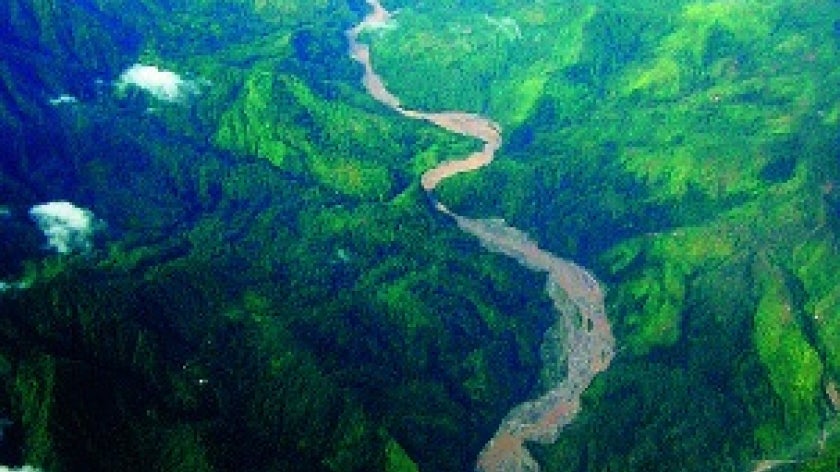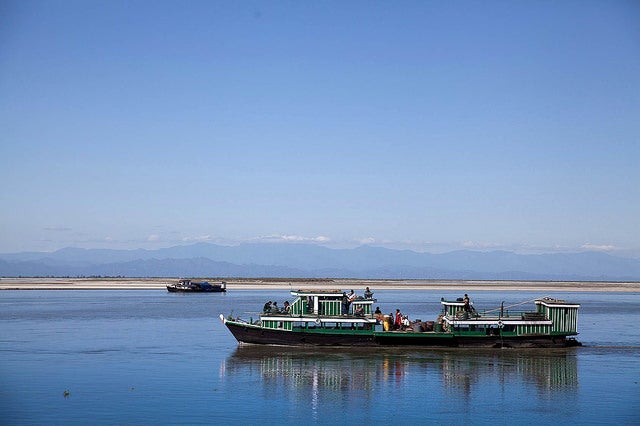
Across the globe, 276 rivers connect the territories of two or more countries, covering about 50% of the Earth's surface, and 40% of the world's population depends on the freshwater resources from these river basins. Similarly, most of the world's 66 large marine ecosystems (MEs) are shared by more than one country. There are also untold numbers of shared aquifers. Collaboration across sectors and countries is no longer optional: it is crucial to ensure the continued and adequate availability of water for human consumption, and to ensure peace and security.
Water scarcity – a problem for all
Freshwater is becoming an increasingly scarce resource in most regions, with pollution, population growth, rapid urbanization and increasing demand for food putting increased pressure on global freshwater resources. Approximately 80% of the world's population is already exposed to high levels of threat to water security, and approximately 1.2 billion people live in river basins where human water use has surpassed sustainable limits. Furthermore, climate change leads to changes in precipitation and run-off and increases frequency and severity of floods and droughts.
These pressures become especially challenging in shared water systems. At the river-basin level, the use of the transboundary water system by one state usually has an impact on the other states through changes in water quality, absolute alteration of river flow, or change of timing of such flow. Flow changes or timing of water releases by storage in an upstream country impact the water arriving downstream. This can be beneficial by decreasing downstream flood risks, or through producing hydropower that can be traded between countries, but it can also cause damage through flow reduction downstream falling short of the water needs for cities, agriculture or ecosystems. Dialogue and agreements between countries are needed to maximize the sum of beneficial impacts and to minimize harmful ones.
The importance of the water, food and energy ecosystem nexus
Within a basin, the need for water, energy, food and environmental services is required for the well-being and economic development of each nation. Each country needs water for every dimension of the nexus, yet it is not economically viable and often not physically possible to attain all these goals by self-reliance, within one's own borders. Addressing the nexus is especially important as the global population is expected to increase by more than 2 billion in 2050, with urban population expected to almost double to 7 billion, giving rise to new mega cities. Most of these cities will develop along rivers and near the coast, importing their resources both from surrounding as well as distant regions. Urbanization puts increased pressure on energy, water, and food resources and their associated ecosystems. Cooperation with neighboring countries is an imperative in most cases, given that climate change will add to the challenges, requiring flexible and adaptive arrangements among countries.

What we will do
Cooperation on water has led to increased economic cooperation, integration, and regional stability and peace over the years. The GEF is among the largest financiers for cooperation on international waters. 10 billion in GEF grants and co-finance across 170 countries have been invested over the last 22 years to work across river, lake and groundwater basins, large marine ecosystems and oceans and issues that connect them.
The GEF, together with our partners, is committed to support countries to strengthen effective and efficient water use, and enhance delivery and sharing of environmental and socio-economic benefits in transboundary basins by balancing competing water uses across sectors and borders. GEF's support and finance will put specific emphasis on supporting countries to consider nexus dimensions as an entry point for cooperation, reducing potential for conflicts between countries sharing water resources.
The GEF has traditionally done so through a structured approach across countries starting with common fact finding and priority setting through the Transboundary Diagnostic Analysis and Strategic Action Programs formulation process. This can aid in prioritizing investments to optimize collective and individual country benefits from cooperation, and to attain development outcomes of concerned countries. This process of building trust and creating a common vision for development and sharing of benefits has also shown to be a sound process for discussion of long-term, formalized regional legal and institutional frameworks for cooperation.
Operationalizing the transboundary benefit sharing concept will include the need to quantify both benefits and trade-offs across sectors and countries, considerations of how to involve regional economic bodies in formalizing nexus dimensions, how to tackle conjunctive management of surface and groundwater, and advancing wider regional integration. Other priorities include giving a voice not only to science and policy but also civil society, and to women, in making development choices.
Furthermore, the Sustainable Development Goals, which will define the post-2015 development agenda, recognize the need for cooperation to ensure continued and adequate availability of water for human consumption. Of these, Goal 6, which concerns ensuring the availability and sustainable management of water and sanitation for all, includes as Target 6.5 that by 2030 integrated water resources management be implemented at all levels, including through transboundary cooperation as appropriate.